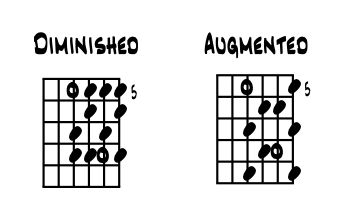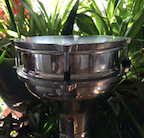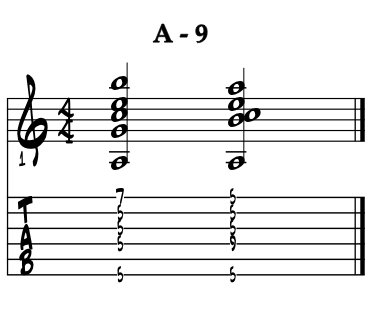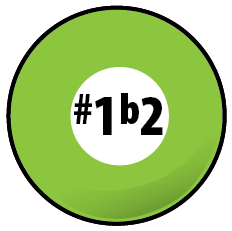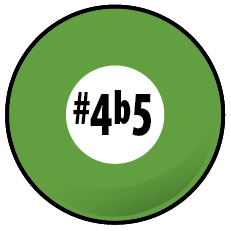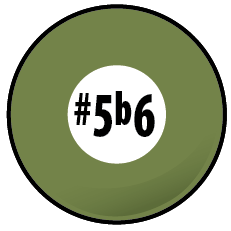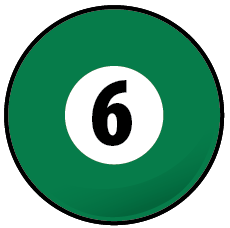'anything from anywhere' 'anything from anywhere for guitar' ... and everything in between too :) ~ a scale / arpeggio / chord evolution ~
|
"Just because it's improvised doesn't mean it's not a legitimate composition." |
wiki ~ Julian Lage |
The nutshell ~ 'anything from anywhere.' This idea has a sort of dual, reflective nature; that we can project any of our ideas equally from each of the 12 pitches and in this practicing; to be able to sound out any of our aural colors from each of the 12 pitches of the chromatic scale. Cool ? The 'movable One' theories are the solid example of this sort of thinking; simply projecting identical principles from a chosen root pitch note, i.e., creating a key center, which governs near all our Americana songs. What's cool in the following discussions is how 'anything from anywhere' theory will also illuminate the spaces in between the existing pitches of your music, through all the styles. While mostly leaning toward the 'jazz it up' here, knowing ways to explore the space between your pitches can advance one's creative palette of colors. |
That in theory; 'anything', any pitch, riff or ditty, interval, scale, mode, arpeggio or chord, or cluster of pitches, can be equally projected from 'anywhere', meaning equally projected from 'anyone' of our 12 pitches. So in this 'anything from anywhere' discussion and concept, we are simply working out what one pitch can be theorywise through our entire Americana pitch resource. Even the blue notes ? Yea, and while their theory is sticky at times their sound is unmistakable :) While this is surely an advancing perspective, though aimed to players, composers and arrangers all, we sense that in every style and its myriad genres there's a historical evolutionary pathway that shows how the new 'puzzle pieces' of a day' are woven into the mix of the everyday music of each generation of artists. Accumulating these pieces through succeeding generations and our puzzles evolve. This ATFAW perspective is simply a way to locate those errant puzzle pieces when they come along; what to do with that new 'chunk' of harmony, or interval lick that makes your hair stand right up. We can reverse engineer this perspective too, when we need a 'something' in a song to smooth out an awkward spot. Once we have the root note to build upon, this ATFAW is a theory structured way to go through our palette of musical colors, finding the right hues to meld parts together. A great accelerator. In leaning towards blues and jazz styles, pairing ATFAW properties with 'chord type', a 'typing' of any chord by its by function, as defined by a chord's '3rd and 7th' notes, can dramatically accelerate the process of one's own development of their artistic palette. Study and master the merging of these two theory concepts and prepare yourself for a kaboom. |
For guitar. For guitar, six string standard tuned, this 'atfaw' becomes the puzzling of the guitar's built in shapes for; triads, arpeggios chord, any shape really from any fret. Thinking localized position, so a span of six frets or so, diatonically covers everything through 12 keys. And this localized six fret span easily slides up and down the neck, creating multiple spots for the same pitches. Here the coolness is in the organic physicalities of the instrument; that low to high pitches with various widths of string help shape the a lick's essence; bending note and the blues hue ? Cool ? |
A start / into the waybac. Decades ago now I heard a horn player shedding their scales in the following order; major, then natural minor and then Mixolydian. Termed here a 'shedding cycle', goes like this. Example 1. |
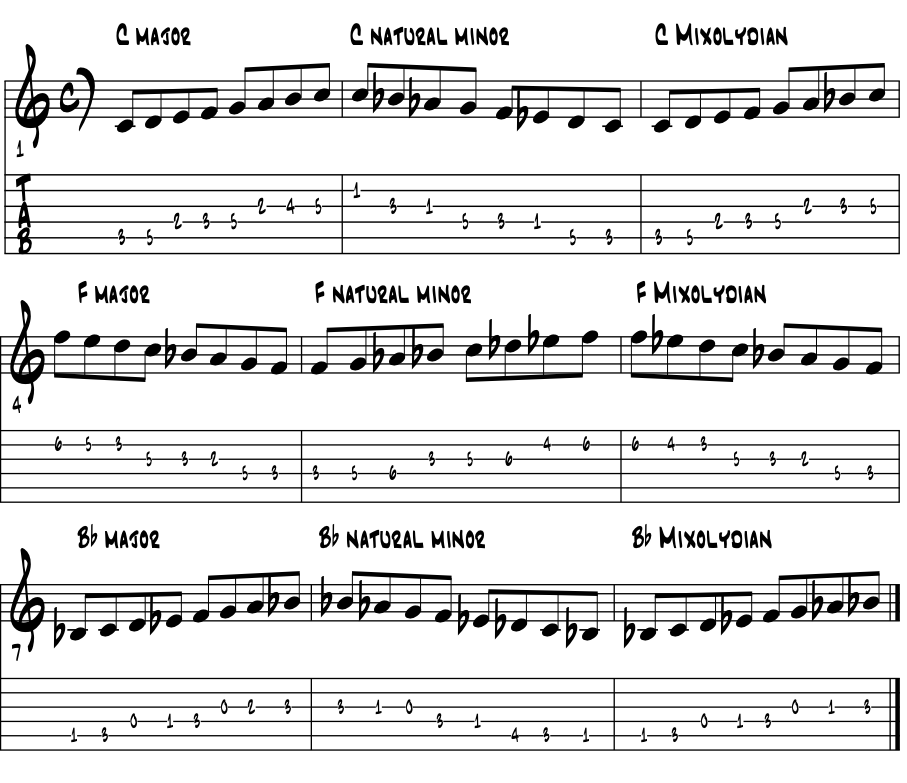 |
So from our chosen root pitch 'C' this shedding cycle covers the major, natural minor scale and Mixolydian. As Mixolydian is our V7 / C7, its aural color sets up the modulation to our next key center 'F', where the process starts over again; major / minor / Mixolydian / F7, then off to 'Bb.' Cool ? Run this through all 12 keys? Absolutely. Anything from anywhere right? For while these are just three of our many essentials colors that we get in all 12 keys, they also are the parent scales for Two / Five and One chord types, and form the essential cadential motion of jazz. |
Quick review. So the basis of this last idea is part of the 'anything from anywhere' concept. In this thought process we want to theorize the ability to create any of our resources from any one pitch. Once in place we then tailor make our own exercises based on the challenges we create for ourselves, most often determined by the styles of music we dig to play. While cycling through key centers is surely a jazz practice, all players of all styles, who are looking for a bit more 'through the changes' in their lines, will dig this sort of theory puzzle / challenge. |
So what follows is based of the musical above idea. We create the set in stone groups of pitchers from each of the 12 pitches of the chromatic scale and project them all off one root note. For more shedding cycles follow the link. |
The results / evolution of scales. In evolving this theory for guitar, we can take full advantage of two built in 'guitar' theory features; one that the open low 'E' string gives us a bass note for support which we can sound and let ring out as an open string. Thus, we can be our own bass player in this approach. |
|
Second, since we've an octave range per string (mostly), we get to play most melodies on one string; in this next idea the high 'E' string. This single string approach helps clarify our connect with the pitches, their location and nuancing, it gets us comfortable moving up and down the fingerboard sounding pitches, scales and melodies all over a totally solid root bass note. |
|
In following in the ancient traditions of melodies, all of these colors are run high to low, as descending lines with some rhythms creating melodies, like we think the ancient Greeks did with their modes? Yep, top to bottom and resolution. So eight, '8' in the following numerics, is the upper octave of our tonic pitch and starting point? Sure is; 8 7 6 5 4 3 2 1 :) Please examine the numbers and scale degrees in a descending 'E' major scale. Ex. 3. |
scale degrees |
8 |
7 |
6 |
5 |
4 |
3 |
2 |
1 |
major scale pitches |
E |
D# |
C# |
B |
A |
G# |
F# |
E |
 |
A reminder. In our musings and labeling of the theory components throughout the local universe, if something is not designated in any special way, it is thought to be 'major', i.e., has a major 3rd in its construct. A letter notated 'E' triad is assumed to be major. So sound a low 'E' and find each group of pitches on the high 'E' thinking top to bottom. Example 3a. |
| E pentatonic major scale | 8 6 5 3 2 1 | core five pitches within an octave |
| E major scale / Ionian | 8 7 6 5 4 3 2 1 | a 'new' mode from Glareanus |
| E Dorian | 8 b7 6 5 4 b3 2 1 | ancient Greek mode |
| E Phrygian | 8 b7 b6 5 4 b3 b2 1 | ancient Greek mode |
| E Lydian | 8 7 6 5 #4 3 2 1 | ancient Greek mode |
| E Lydian b7 | 8 b7 6 5 #4 3 2 1 | modern altered / mode of melodic minor |
| E Mixolydian | 8 b7 6 5 4 3 2 1 | ancient Greek mode |
| E Aeolian | 8 b7 b6 5 4 b3 2 1 | a 'new' mode from Glareanus |
| E Locrian | 8 b7 b6 b5 4 b3 b2 1 | ? ? ? |
| E whole tone scale | 8 b7 b6 b5 3 2 1 | all whole steps |
| E pentatonic minor scale | 8 b7 5 4 b3 1 | our five core pitches for minor |
| E blues | 8 b7 5 b5 4 b3 1 | minor pentatonic w/ tritone upgrade |
| E natural minor | 8 b7 b6 5 4 b3 2 1 | relative minor to G major |
| E harmonic minor | 8 7 b6 5 4 b3 2 1 | raised 7th |
| E Klezmer minor | 8 b7 b6 5 4 3 b2 1 | V mode of harmonic minor |
| E melodic minor | 8 7 6 5 4 b3 2 1 | raised 6th and 7th |
| E diminished | 8 7 6 b6 b5 4 b3 2 1 | whole tone / half tone |
| E altered dominant | 8 b7 6 b5 4 b3 2 1 | lower diminished upper whole tone |
| E chromatic scale | 87b76b65b543b32b21 | all half steps |
Remind you of any melodies ? Did any riffs jump out ? How'd the blues pitches go ? Lots of choices for sure. Work the groups for your music, knowing the rest of the groups are out on your horizon now. Super bored, in need of a challenge ? Transpose to other 11 keys ? |
Second grouping / arpeggios. Moving to arpeggios our tasking gets a wee bit more complicated. Our lines will ascend; root (1) 3 5 7 etc. Building from the root up we can hear the chord in the arpeggio's pitches. Thus, we do not worry too much about a pedal tone as we're outlining chords by single note line from the root pitch. And what level of the arpeggio do we ascend too? In starting out, perhaps past the triad to the 7th, this way we're defining chord type as well. Starting on low 'E' string, 5th fret. Example 4. |
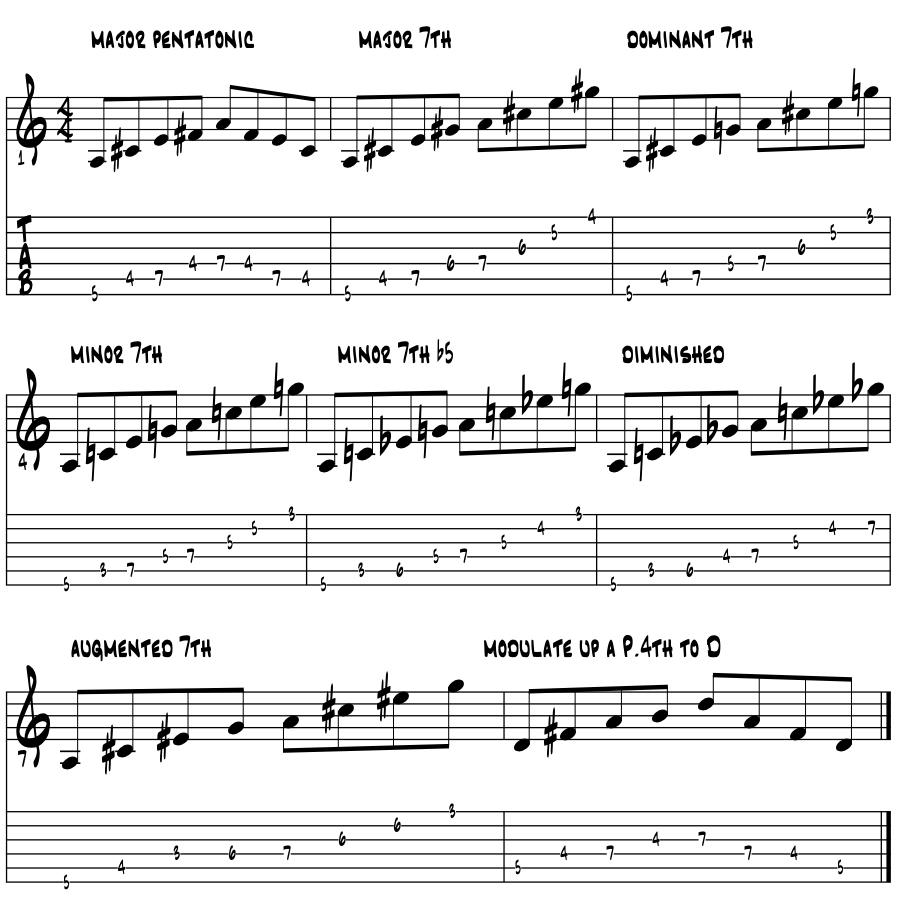 |
name |
pitch #'s |
arpeggio |
A pentatonic major arpeggio |
1 3 5 6 8 |
A C# E F# A |
A major arpeggio / triad / maj 7th |
1 3 5 7 |
A C# E G# |
A dominant 7th and beyond |
1 3 5 b7 |
A C# E G |
A minor 7th and beyond |
1 -3 5 7 |
A C E G |
A minor 7 b5 |
1 -3 -5 b7 |
A C Eb G |
A diminished 7th |
1 -3 -5 bb7 |
A C Eb Gbb (F#) |
A augmented triad 7th |
1 3 +5 b7 |
A C# E# (F) G |
D pentatonic major arpeggio |
1 3 5 6 8 |
D F# A B D |
Transpose to all 12 keys by moving root notes up and down the string. Here's some common shapes from our chosen root pitch 'D', now 5th fret / 5th string. Ex. 4a. |
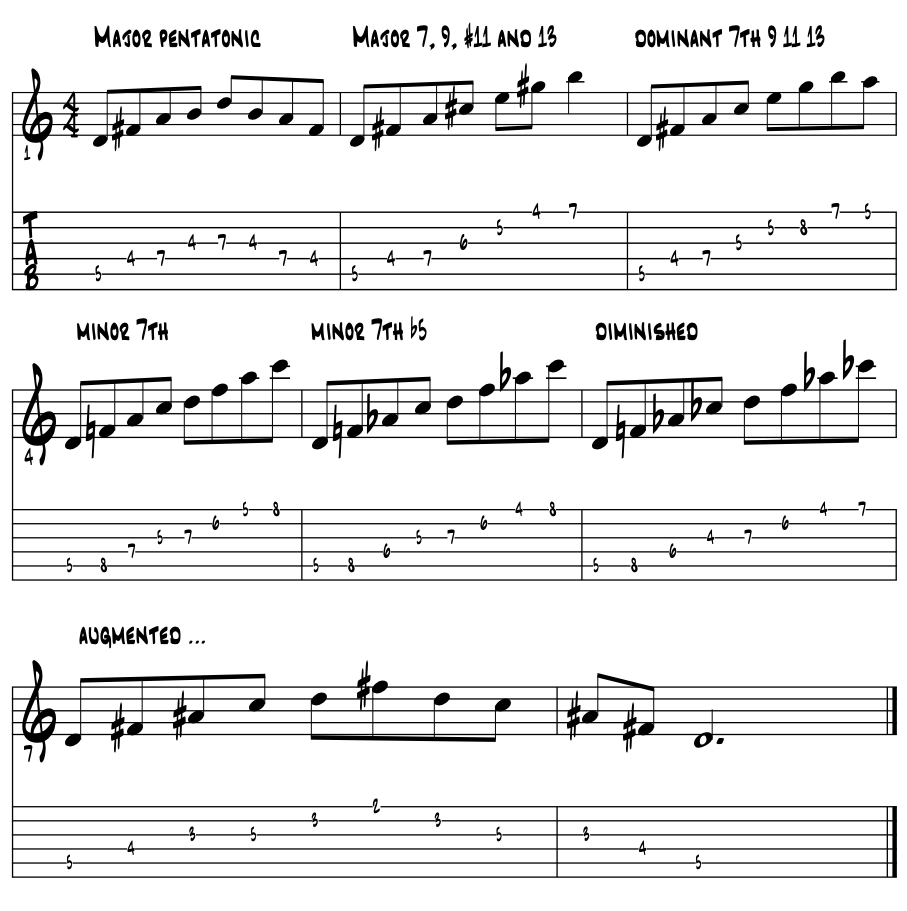 |
name |
pitch #'s |
arpeggio |
D pentatonic major arpeggio |
1 3 5 6 8 |
D F# A B D |
D major arpeggio / triad / maj 7th |
1 3 5 7 9 11 13 |
D F# A C# E G# B |
D dominant 7th and beyond |
1 3 5 b7 9 #11 13 |
D F# A C E G# B |
D minor 7th and beyond |
1 -3 5 7 |
D F A C |
D minor 7 b5 |
1 -3 -5 b7 |
D F Ab C |
D diminished 7th |
1 -3 -5 bb7 |
D F Ab Cb |
D augmented triad 7th |
1 3 +5 b7 |
D F# A# C D |
Transpose to all 12 keys by moving root notes up and down the string. Here's some common shapes from our chosen root pitch 'G', now 5th fret / 4th string. Ex. 4b. |
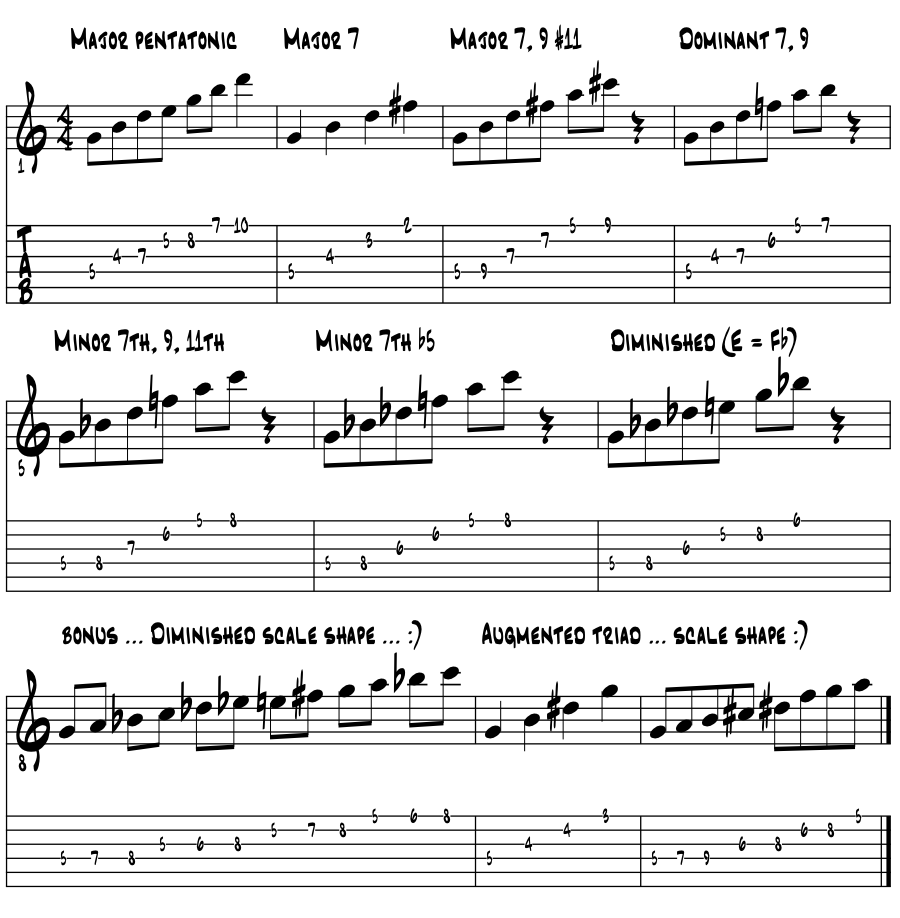 |
name |
pitch #'s |
arpeggio |
G pentatonic maj arpeggio |
1 3 5 6 8 |
A C# E F# A |
G major 7th |
1 3 5 7 |
G B D F# |
G major 7, 9 #11 |
1 3 5 7 9 #11 |
G B D F# A C# |
G dominant 7, 9 |
1 3 5 b7 9 |
G B D F A |
G minor 7, 9 , 11 |
1 b3 5 b7 |
G Bb D F A C |
G minor 7 b5 |
1 b3 b5 b7 |
G Bb Db F |
G diminished |
1 b3 b5 bb7 |
G Bb Db Fb (E) |
G diminished scale |
1 2 b3 4 b5 b6 6 7 8 |
G A Bb C Db Eb E F# G |
Added movable bonus from the 4th string. The diminished scale shape in measure 8 above is a true keeper for jazz leaning players who might eventually shed through the multiple resolving properties of V7b9 in localized areas. A theory milestone along on Coltrane's pathway to "Giant Steps", this diminished scale shape is near perfect butter. Four fingers / four frets and three pitches per string, so the the potential to 'blaze and blur' is built right in :) The augmented scale shape also has the same localized, multiple resolving quality potentials. Look to the middle of the shape for an easy augmented four pitch 'ladder' of sorts, to quickly scoot up and down the neck. As both of these colors are aurally bold on our palettes, it's nice to have solid pitch location shapes to visualize ideas from. And both are totally totally movable up and down the fretboard! Example 4c.
Those in the know do know how tricky it can be to keep track of the multiple resolution potentials of these two unique groups. Move the shape a half step either way and whoa ... four new keys of each major and minor for diminished, six for augmented, its a lot. But then ... these shapes cycle up by minor 3rd and major 2nd respectively to the same resolutions. Crazy yes I know, quite the puzzle ! Try arpeggiating a Two chord prior to launching with these colors, so a diatonic Two to the chosen tonic One, as you figure out the shedding. Thus, these 'set in stone' handy shapes lend themselves well to all sorts of creative sequencing and permutations for the modern guitarist, yet always maintain their structural integrity, resolving properties and characteristic colors. |
Third grouping / chords. As with the arpeggios so goes the chords. Namely, how far into the upper structure do we extend our voicings? Again the song (s) we're learning and its style will give some guidance here for you. Children's songs and the early folk styles often necessitate pure triads, blues into the 7th, and jazz can include the 7th and into the upper color tones. Rock and country can be blues's influenced thus combining e.t. chords and the blue notes. And the rest of shaping any style or genre ? Well, time and rhythms and riffs hello :) |
Quick review / color tones. Folk, country, bluegrass and rock players mostly rely on the triads and add a 7th on the Five chord (V7). Even 'b7' on the Four chord too (IV7), in the bluesy leaning numbas. Since these styles mostly include vocals, triads will usually give us a perfect start point while not distracting the singers from their own melody pitches. The chords for adding the blues hue into songs is near always V7 near always centered, so adding a 7th and even the 9th above, is essential and gently encouraged if need be. Jazz players are eventually looking towards understanding and utilizing all of the color tones, both diatonic and altered, through all 12 key centers. In jazz chords the basic overtone series acoustic principles kick in providing a solid basis of construction to begin, and another topic to explore and expand our resource. |
While jazz chords are potentially a dramatic expansion of the shedding, remembering that near every chord shape most cats use are fully movable chords on the guitar brings some glue to the learning process. This applies to both root position and chord inversions. This in itself gets us to 95% of this 'anything from anywhere' idea for chords. By its very physical nature, the guitar is a chromatic leaning instrument so for jazz and blues artists, the movable chord forms are a perfect match. |
Does this 'perfect' include the motion of the half step lead in motion? It can, for once a cat starts to get hip to the changes and feels the swing in the time, they start to approach their principle chords by half step from above or below, 'lead into' the next chord then the next etc. The half step motion moving in time brings the swing thing big time, getting the groove 'off the ground' a bit. And once up, the effortless glide of the swing begins :) Here's the half step motion in action. Example 5. |
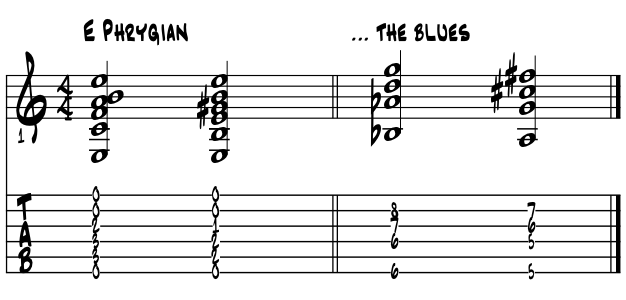 |
So ... 'F' major over an 'E' pedal ? Open chord voicings. The 'Bb' to 'A' is a way better audio example. Learning of and mastering this one concept, the half step lead in, is well worth the price of admission to this work. U leaning to blues and jazz in your stylings ? Sharpen your sense of time and its ability to pull a la physical to make it swing? Consider the HSLI as a portal to a new understanding of time. Here's some blues in 'A' overplayed into a 'half step extravaganza. Example 5a. |
Learning the letter names of the pitches rock solid is probably the game changer for most folks reading here. From letters we can then move onto numbers as the theory discussions continue to evolve. Chords by numbers genericizes the whole tamale, for in any song in any key, a One chord is still a One chord yes ? And from a three note triad basis we build with the color tones that as added, morph us through the Americana styles. So this anything from anywhere is probably not strong chord theory, but yet a cool perspective for those so inclined. Yet, combining the diatonic 3 and 3 and movable forms, and understanding how and why we have 12 relative major and minor keys, covers a big chunk of the composing resource for the telling of our Americana musical stories. |
When starting out on the folk side of our style spectrum, the open chords are often first of the diatonic '3 and 3' chords. Mostly made of of triads and doublings of their pitches, they're not quite so movable. That said, there are some very handy movable triads and their chord inversions,which open up new pathways of passing chords. Thus, many successful triad players use a capo to get their cherished shapes into other key centers, the capo becoming another magical aspect with our modern built 'anything from anywhere' guitars. |
A flip side of standard tuning ... We might want to consider also open tunings in this discussion thread. Sort of the opposite of the anything from anywhere topic. With open 'G' being a common denominator between the folk, bluegrass banjo sounds and the early blues slide players, we learn that originally there was a lesser degree of this, and maybe none, of this ATFAW potential. Open tunings lean modal, often 'one trick ponies' that have just one special color within. And to get there we open tune. Also to remember, that open 'G' is a rocker's delight and rhythm guitar essential, that can totally light up a room (arenas too) with just a couple of fairly easy barre chord shapes and the big noise. |
So with the arpeggios so with chords. Following along our above format, examine the various chord colors from the root pitch 'A', so the 6th string / 5th fret. Example 5a. |
 |
chord name |
pitch #'s |
arpeggio |
A triad |
1 3 5 8 |
A C# E |
A 6 / pentatonic |
1 3 5 6 |
A C# E F# |
A major 7th and beyond |
1 3 5 7 |
A C# E G# |
A dominant 7th and beyond |
1 3 5 b7 |
A C# E G |
A minor 7th and beyond |
1 -3 5 7 |
A C E G |
A minor 7 b5 |
1 -3 -5 b7 |
A C Eb G |
A diminished 7th |
1 -3 -5 bb7 |
A C Eb Gbb (F#) |
A augmented triad 7th |
1 3 +5 b7 |
A C# E# (F) G |
Bonus chord. Here's a couple of 'minor 9' chords built up from the sixth string. Both sure keepers :) The second voicing with the inner 9th, while a bit of a stretch, works fine as a tonic minor color and also does create a nice potential walk down to 8, 7, b7, 6 etc. Example 5b. |
Now from the root pitch 'D', 5th string, 5th fret. Ex. 5c. |
 |
chord name |
pitch #'s |
arpeggio |
D 6 / 9 pentatonic |
1 3 5 6 8 |
D F# A B E |
D major / triad |
1 3 5 |
D F# A |
D major maj 7 |
1 3 5 7 |
D F# A C# |
D 7 |
1 3 5 7 |
D F# A C |
D 9 |
1 3 5 7 |
D F# A C E |
D 7#9 |
1 3 5 7 |
D F# A C E# |
D - / maj 7th |
1 -3 5 7 |
D F A C# E |
D -7 |
1 -3 5 7 |
D F A C |
D -9 |
1 -3 5 7 9 |
D F A C E |
D -7b5 |
1 -3 5 b7 |
D F Ab C |
D diminished 7th |
1 -3 5 7 |
D F Ab Cbb |
D augmented triad |
1 -3 -5 b7 |
D F# A# |
G major triad |
1 3 5 8 |
G B D G |
Transpose to all 12 keys by finding the different root pitches on the 5th string. Now from the root pitch 'G', 4th string, 5th fret, same process. Example 5d. |
 |
chord name |
pitch #'s |
arpeggio |
G 6 pentatonic |
1 3 5 6 8 |
G B D E |
G major / triad |
1 3 5 |
G B D |
G major 7 |
1 3 5 7 |
G B D F# |
G major maj 7 #11 |
1 3 5 7 9 #11 |
G B D F# C# |
G 7 |
1 3 5 7 |
G B D F |
G 9 |
1 3 5 7 9 |
G BD F A |
G -7 |
1 -3 5 7 |
G Bb D F |
G-7 |
1 -3 5 7 |
G Bb D F |
G 7 sus 4 |
1 5 7 11 |
G D F C |
G -7b5 |
1 -3 -5 b7 |
G Bb Db F |
G diminished 7th |
1 -3 -5 bb7 |
G Bb Db Fb |
G 9+5 |
1 3 5+ b7 9 |
G B D# F A |
Cool ? "Grist for the mill" for sure but finding a new chord or two is a just reward for the shedding. |
The grand wazoo of ATFAW / by the numbers. Another way we can approach this idea is by looking at each of the scale degrees of a two octave chromatic scale and examine common chords and colors we will often find in that position. In UYM / EMG we call this 'by the numbers.' Here are the links. |
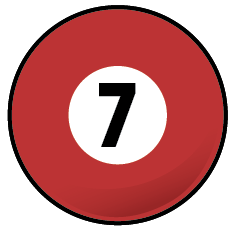 |
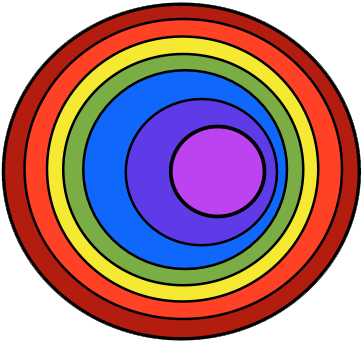 |
|||||||||||
 |
 |
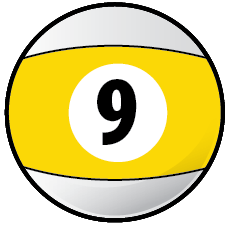 |
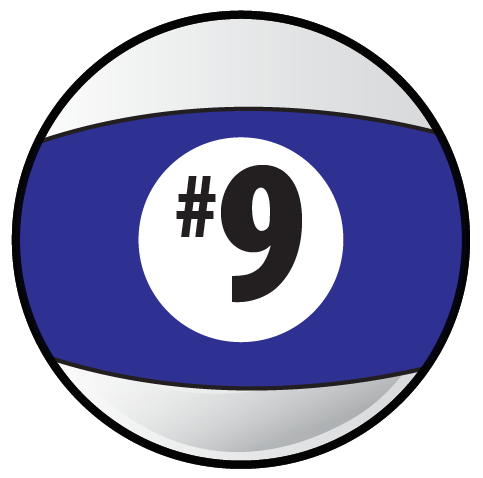 |
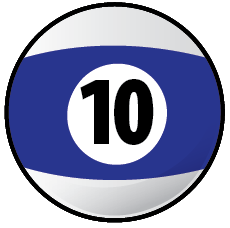 |
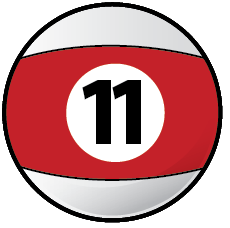 |
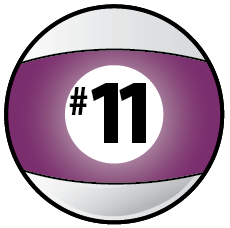 |
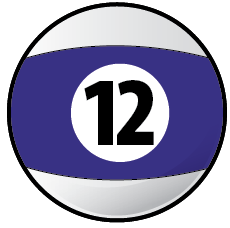 |
 |
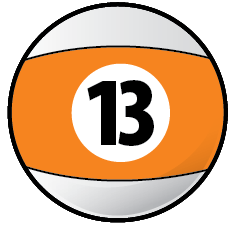 |
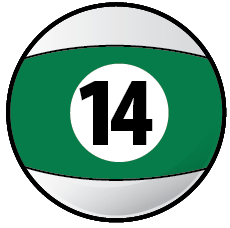 |
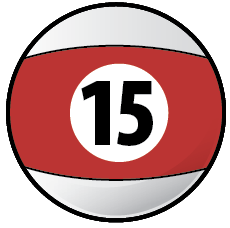 |
 |
Soloing over one chord. In today's Americana blues and jazzy leaning styles, easy to include blowing sections created by a rhythm / groove and just one chord. This approach to composition of improvisation was popular in the 80's with artists such as guitarist Lee Ritenour and friends and contemporaries. And from that one root pitch of one chord, we can begin a pathway into this 'anything from anywhere' improv idea. Originally in the blues, and modern theory known as a 'modal blues', in 4/4 time and a four bar phrase. Run it till it begs to go to Four. The melodic treatments of sequence and permutation of an idea, modes groups and the interval studies, evolving rhythmic motives in similar ways, all can play a part in this improv process and one chord format. Here's a sample. Super common in minor too. No end to it really and basically we're just jamming. If you dig this sort of playing, listen to the artists that you dig doing it and follow their ideas, grab some of their licks and shed them till you make them your own. Tis the way it's always been done; emulating the art we love and build upon it to express our ideas and tell our own stories. Once having something under your fingers to start with, be creative and over time you'll learn to build up a solo over any one chord, progression, form etc. |
Cycles for shedding. In the first example up top we cycled select melodic groups into a sort of 'one after another' that, energized by their relationship to one another, created a sense of forward motion to the lines while getting some rote shedding done. The following suggestions are just that, suggestions to sift through the resources and find patterns that help to create the art in your heart. |
| 1 2 3 5 | cycled by 4th's / chromatically / -3rd ~ 4th a la "Giant Steps" |
| 1 3 5 / major triads | cycled by 4th's / a One Four Five blues / chromatically / whole steps |
| 1 b3 5 / minor triads | cycled by 4th's / a One Four Five blues / chromatically / whole steps |
| major scales | cycled by 4th's in one localized position |
| 1 b3 b5 b7 / -7b5 | as vii resolving to diatonic relatives major and minor |
| diminished scale | into its four major and four minor key centers |
| blues scale | cycled by 4th's / from One Four and Five as a blues |
Review. The idea of anything from anywhere is probably more about helping us get our arms around the resource that anything else. The idea of knowing where things are, so that if we ever need a particular component, we have a way in to the resource to begin our search. |
Another way into this 'anything' perspective is thinking of One through to sharp Fifteen. Called 'by the numbers', instead of projecting all of the theory from one pitch, we look at each numerical position in relation to a tonic pitch and look for the various aspects of tonal gravity and aural predictability; two elements of musical style that we might better understand through the theory that helps us shape the musical tales we tell. |
"Spending any mental energy looking back cannot help you move forward." |
Bryce Carlson ( high school teacher, solo rowed across the Atlantic ocean ) |
 |
 |
|||||||||||
 |
 |
 |
 |
 |
 |
 |
 |
 |
 |
 |
 |
 |
References. References for this page come from the included bibliography from formal music schools and the bandstand, made way easier by the folks along the way. In addition, books of classical literature; from Homer, Stendahl and Laudurie to Rand, Walker and Morrison and of today, provided additional life puzzle pieces to the musical ones, to shape the 'art' page and discussions of this book. Special thanks to PSUC musicology professor Dr. Y. Guibbory, who 40 years ago provided the initial insights of weaving the history of all the fine arts into one colossal story telling of the evolution of AmerAftroEurolatin musical arts. And to teacher-ed training master, Dr. Joyce Honeychurch of UAA, whose new ideas of education come to fruition in an e-book. |
"Life is about creating yourself." |
wiki ~ Bob Dylan |
Find an e-book mentor. Always good to have a mentor when learning about things new to us. And with music and its magics, nice to have a friend or two ask questions and collaborate with. Seek and ye shall find. Local high schools, libraries, friends and family, musicians in your home town ... just ask around, someone will know someone who knows someone about music who can help you with your studies of the musical arts with this e-book. |
Intensive tutoring. Luckily for musical artists like us, the learning dip of the 'covid years' can vanish quickly with intensive tutoring. For all disciplines; including all the sciences and the 'hands on' trade schools, that with tutoring, learning blossoms to 'catch us up.' In music ? The 'theory' of making musical art is built with just the 12 unique pitches, so easy to master with mentorship. And in 'practice ?' Luckily old school, the foundation that 'all responsibility for self betterment is ours alone.' Which in music, and same for all the arts, means to do what we really love to do ... to make music :) |
 |
"These books, and your capacity to understand them, are just the same in all places. Always bear in mind that your own resolution to succeed, is more important than any other one thing." |
|
Academia references of Alaska. And when you need university level answers to your questions and musings, and especially if you are considering a career in music and looking to continue your formal studies, begin to e-reach out to the Alaska University Music Campus communities and begin a dialogue with some of Alaska's finest resident maestros ! |
|
Formal academia references near your home. Let your fingers do the clicking to search and find the formal music academies in your own locale. |
"Who is responsible for your education ... ? |
'We energize our learning in life through natural curiosity and exploration, and in doing so, create our own pathways of discovery.' Comments or questions ? |
... 'so thanks to equal temper tuning the 12 pitches back in the 1600's and NYC evolutionary improvising blues / jazz artists such the composer ~ saxophonist Charlie Parker during the 1940's, today, 'anything can be anywhere'; meaning that all our musical elements can be projected equally from each of the 12 pitches and any pitch can appear 'anywhere' in any form; scale / arpeggio / chord, both written out and improvised melodic line and it's harmonies in the performance of our Americana musics ... additionally, for chordal instruments such as a piano or guitar, or combinations of single line instruments such as horns, strings etc., sounding pitches together, many of these 'any things' often become a 'movable anything', a 'shape' of two or more pitches; shapes for intervals, for triads, chords, pentatonic clusters, diatonic scales and their modes sequenced and permutated every way, built up into arpeggios and chord shapes, that can also land 'anywhere', which in Mr. Parker's improvisations are completely diatonic in nature, with momentary 'borrows' of chords from another key centers, creating a perfect, all inclusive, deeply blues infused woven pathway, and for guitar players ... an 'any thing' also becomes a very tangible shape on the fingerboard, easily becoming movable shapes that transpose through the 12 keys keys freely up and down the fingerboard and shapes stacked in localized positions, thus including all the elements for each of the 12 major / minor paired keys and the blue notes, blessedly just amazing :) |
